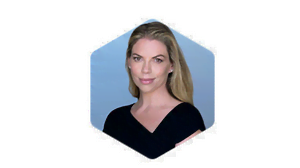
Blue Macellari
Head of Digital Assets Strategy
T. Rowe Price

Despoina Koutentaki
Editorial Director
The Finance Hive
Following on from the successful launch of our new Institutional Digital Assets Trading community last week, The Finance Hive’s Despoina Koutentaki had the pleasure of sitting down with Blue Macellari, Head of Digital Strategy at T.Rowe Price to talk through her experience across both traditional buy side, and native crypto desks. With a wealth of experience, Blue is uniquely positioned to give insight into the crucial differences between the old and new world of finance, and give guidance to those navigating the nascent asset class.
The focus in the first several months has been on building the operational capability, and all the same principles of how you build a sound operational platform apply there, too.”
The biggest gap is making the decision of how to integrate different crypto operational pieces into an existing or legacy traditional finance setup.”
Everything in digital assets moves so much more quickly than expected, so the future will be here much faster than we anticipate.”
The most important thing to consider is the institutional custody of digital assets and the segregation of custody from trading.”
Start by developing your strategic roadmap, beginning with core capabilities, and setting aside the question of product.”
Instead of me building out all the pieces and setting it up, we’ve built seven working groups across various business lines including risk, counterparty, enterprise risk, legal, compliance, trading, and middle-office technology.”
Sharing knowledge and best practices is critical, even in the traditional finance setting.”
Communities like The Finance Hive provide a space where sharing what you learn is essential, and we can all gain from this exchange of information.”
Despoina Koutentaki: Can you tell us about your career journey and how you transitioned to the digital assets space?
Blue Macellari: I spent most of my career in traditional finance focusing on emerging markets, credit, and foreign exchange. In 2017, I left a private equity credit shop to become a founding partner in a crypto-native market-neutral fund in Brazil. I had spent four and a half years there when I started witnessing the industry becoming somewhat institutionalised. In July 2022, I joined T. Rowe as the Head of Digital Assets Strategy, responsible for developing and leading the implementation and executive of our digital asset strategy.
DK: How did you find the transition and how different are things in the digital assets space?
BM: The transition has been good. The same principles apply, with an initial focus on learning and institutional knowledge building. The focus in the first several months has been on building the operational capability, and all the same principles of how you build a sound operational platform apply there, too.
BM: It’s been much easier for me because when I first entered the digital assets space in 2018, many of the solutions were not yet where they are today. The biggest transition has been moving from thinking about things as an offshore operator to an onshore entity – it’s necessarily a challenge but it’s the most significant difference.
DK: Have you identified any significant gaps that the buy side should look to cover in the near future?
BM: The biggest gap is making the decision of how to integrate different crypto operational pieces into an existing or legacy traditional finance setup. Unlike a crypto shop, which is entirely crypto-native, a traditional finance platform may not function well for crypto assets. A lot of the legacy traditional finance systems and inputs aren’t plug-and-play for crypto assets. For example, in crypto, you go out much further in decimal places than you would in traditional finance, so you must think about how to report and record things and how to interact with your existing systems that won’t take an asset that goes out to the 8th or the 13th decimal place.
DK: In terms of advantages and risks, what do you think the future will look like for digital assets?
BM: The biggest risk is that we’re still in the early stages of the technology, and although we can see the use cases on the horizon, we’re not there yet. Investors must be very thoughtful about how they begin to think about their investment thesis or investment framework.
BM: In terms of advantages, the regulation is coming in all three major jurisdictions, which I think will be enormously helpful. Also, everything in digital assets moves so much more quickly than expected, so the future will be here much faster than we anticipate.
DK: What advice would you give to the buy side when setting up a digital assets desk?
BM: The most important thing to consider is the institutional custody of digital assets and the segregation of custody from trading. The issue was highlighted last fall and has existed since the beginning. When setting up an institutional digital assets desk, it’s essential to think carefully about this topic. Overall, I’d recommend building the capabilities while setting aside the question of the product.
DK: Is this your approach to outlining the strategic roadmap for setting up an institutional digital assets desk?
BM: Yes. At T. Rowe Price, we approach this by building capabilities first, without considering the product. It’s challenging to make the case for this approach at an asset manager, but I believe it’s the right way to do it. Start by developing your strategic roadmap, beginning with core capabilities, and setting aside the question of product. This is preferable to reverse engineering, where you pick a product to launch and build the operations backward from that.
DK: What are the necessary changes to your current operational resources and front and back-office infrastructure?
BM: The first core piece is building institutional knowledge and understanding to reframe the issue. Operational pieces are secondary to this.
DK: You’ve mentioned the importance of building institutional knowledge, how can other buy side approach this?
BM: At T. Rowe Price, we aim to have a proof of concept operating this summer, without any products. Instead of me building out all the pieces and setting it up, we’ve built seven working groups across various business lines including risk, counterparty, enterprise risk, legal, compliance, trading, and middle-office technology. We’re going through the vendor selection process and building the pieces that way.
BM: The goal is for everyone in each of those working groups to have enough knowledge to apply its subject matter expertise to digital assets. It also allows for all teams to be involved from day one, and it allows us to get direct feedback on what does and doesn’t work. Sharing knowledge and best practices is critical, even in the traditional finance setting.
BM: Transparency and open-source knowledge sharing are integral to the crypto and digital assets world, and I find this idea very appealing. Even in tradition finance, I believe that we can all benefit from these practices. It’s critical to share knowledge, best practices, and even mistakes, as we can all learn from each other. Communities like The Finance hive provide a space where sharing what you learn is essential, and we can all gain from this exchange of information.
Blue has played a vital role in the creation and subsequent focus of The Finance Hive’s Institutional Digital Assets network, providing us with invaluable insights, and we are most grateful to have her as a founding member and part of our Steering Committee.
Interested in reading the first instalment of our exciting interview series for Digital Assets? Click the link below to read how Andrea Nardon navigated the new investment landscape of institutional Digital Assets.
